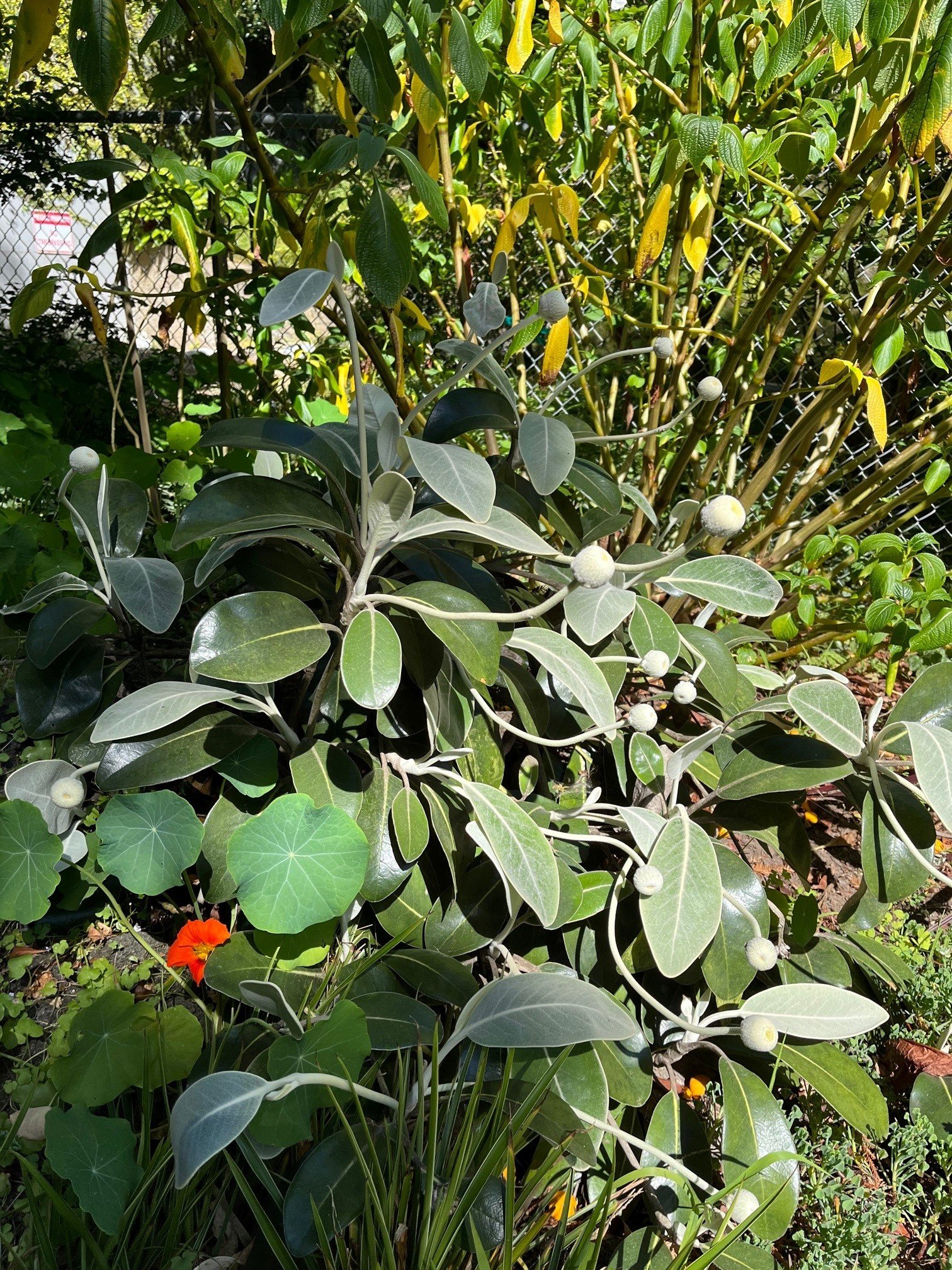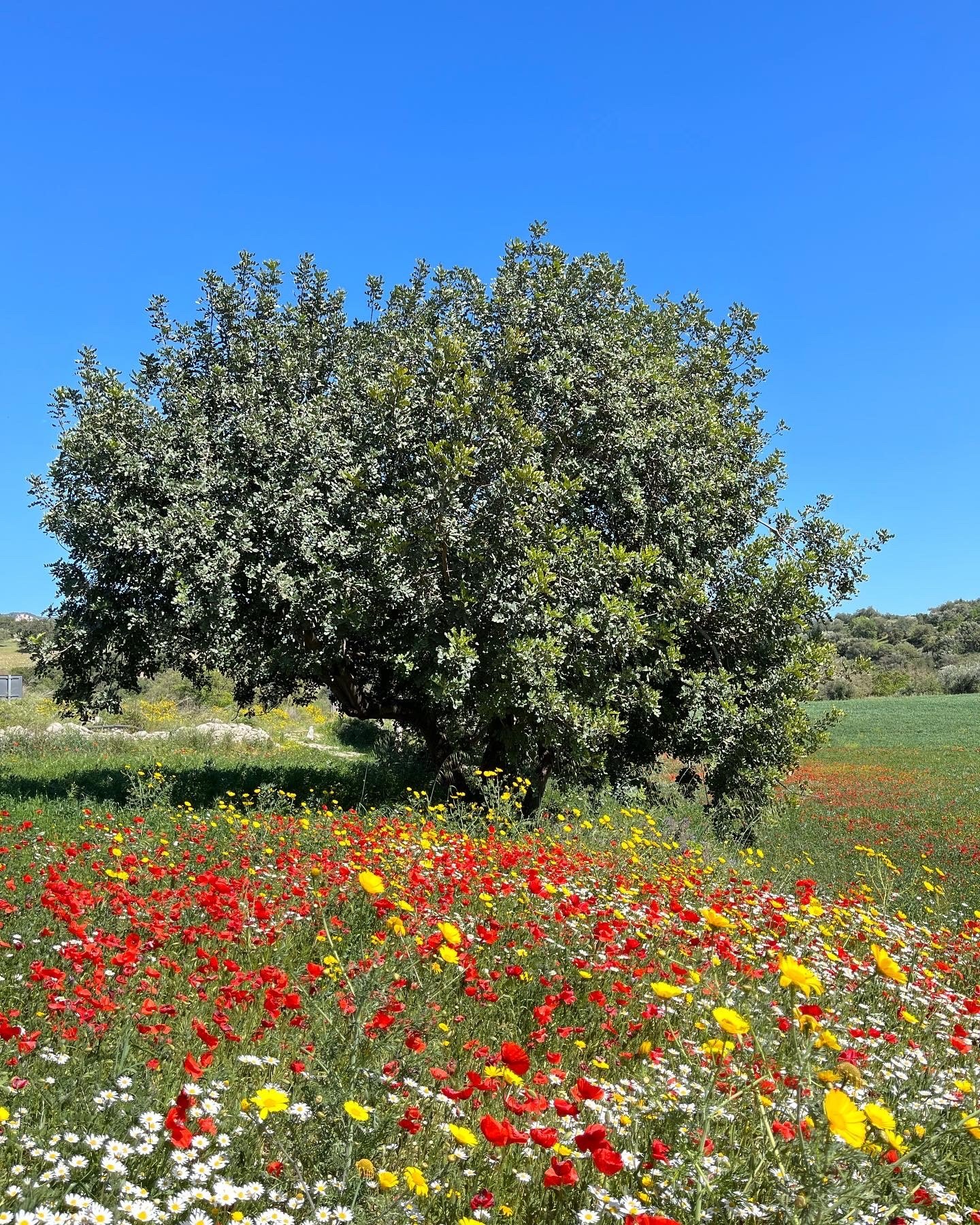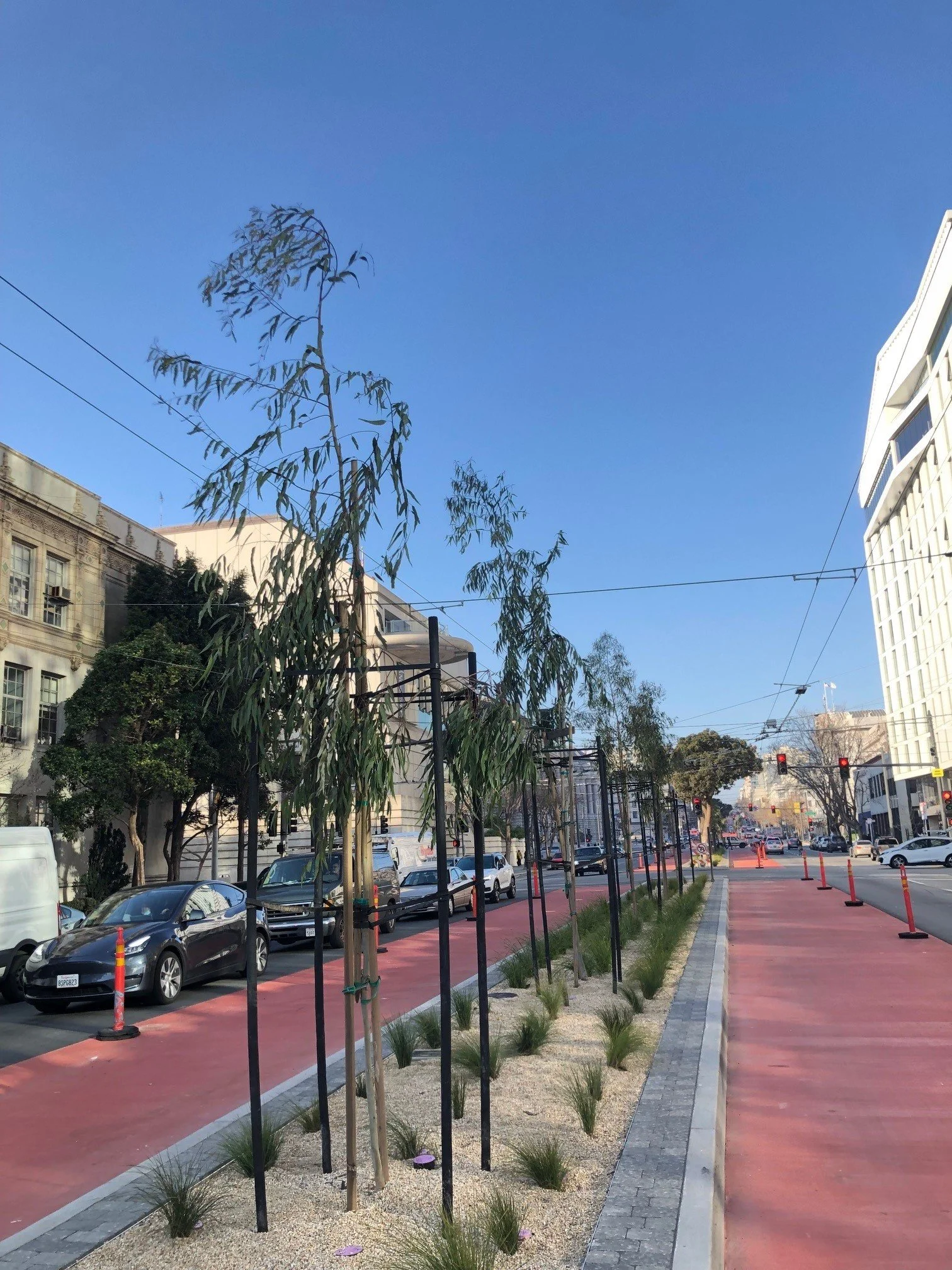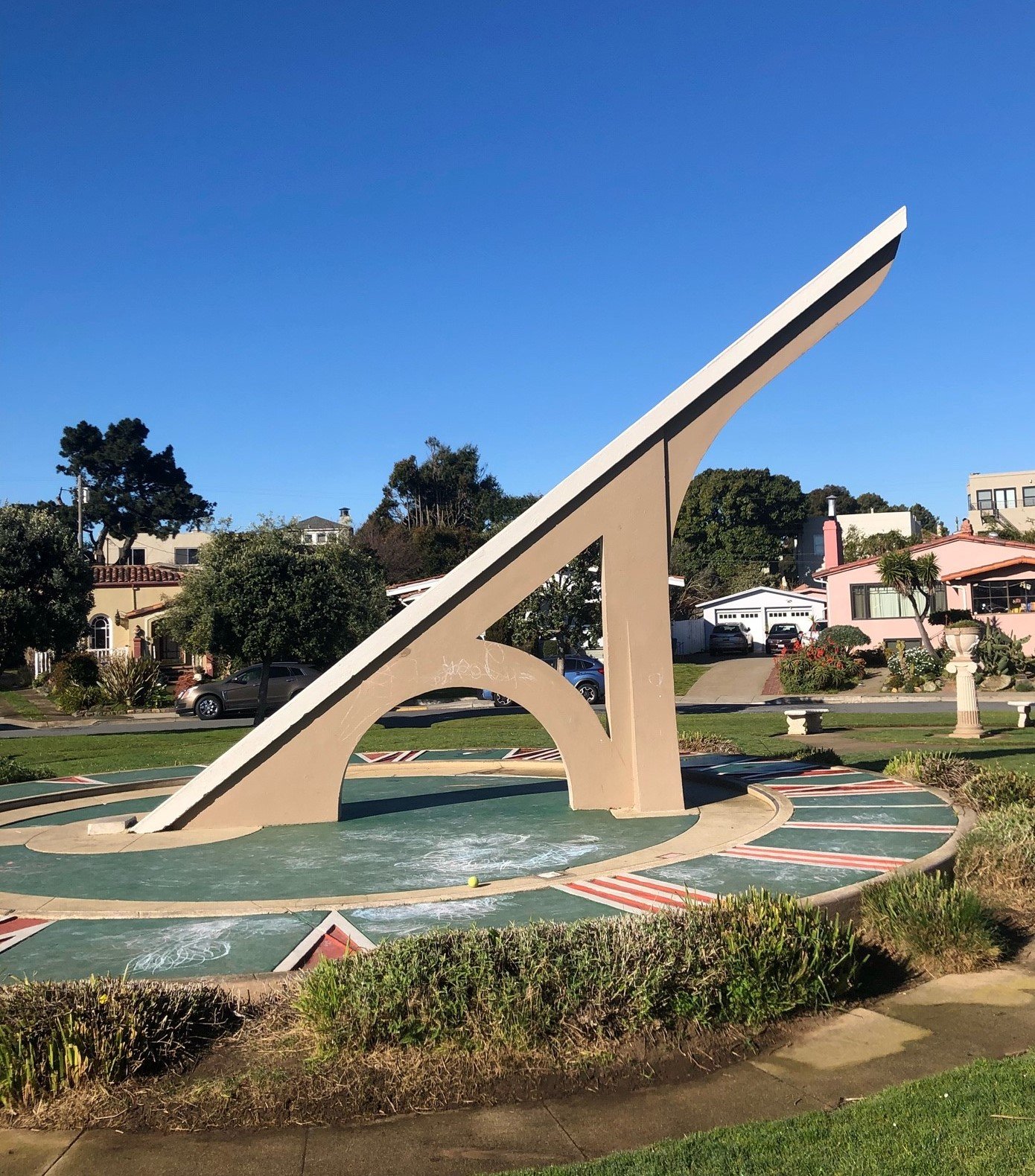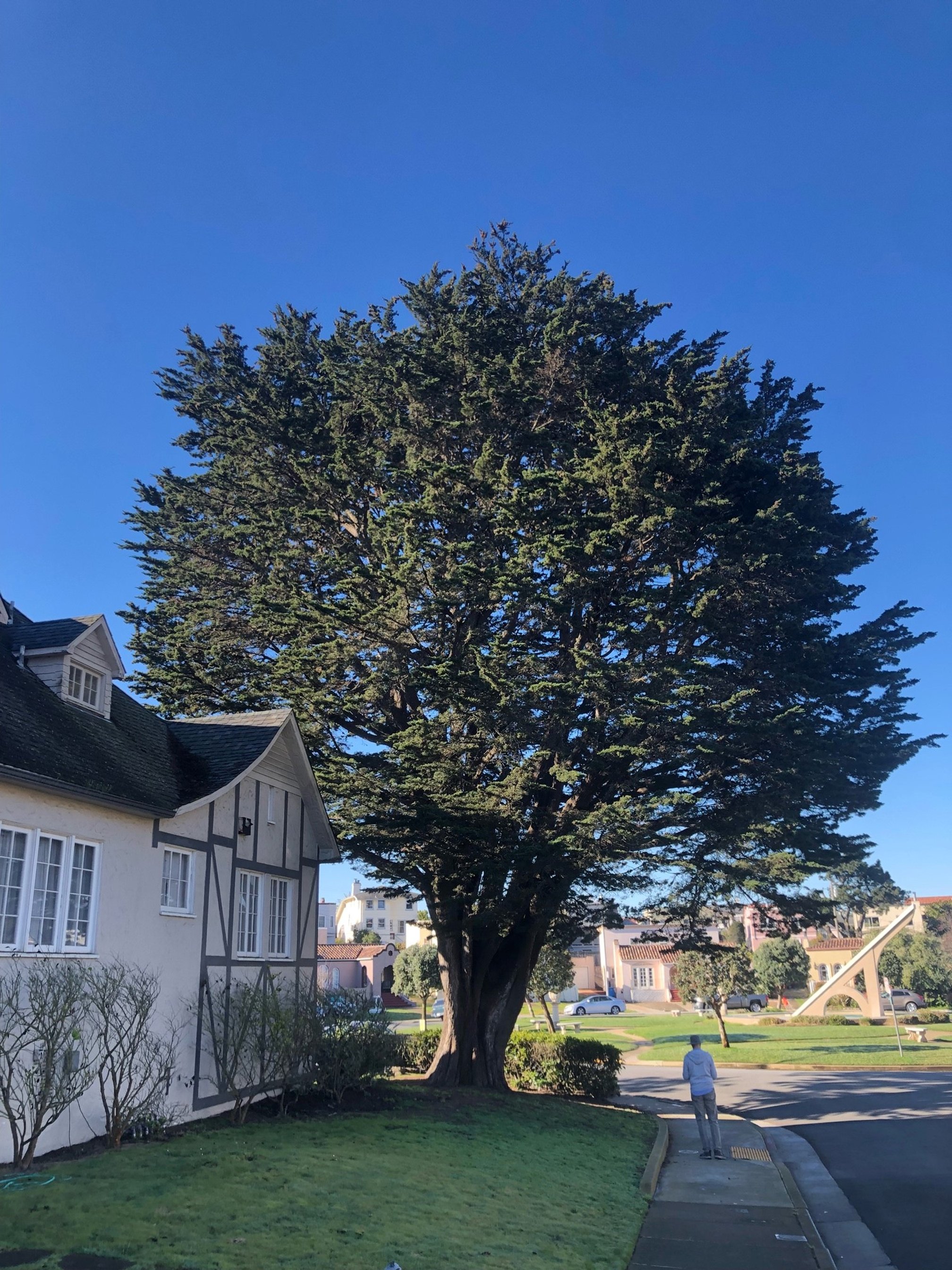Yerba Buena Gardens is one of the green jewels of downtown San Francisco, surrounded by the Yerba Buena Center for the Arts, Moscone Center, and the Metreon Mall. Views of the surrounding skyline are magnificent from within the Gardens.
Today’s walk begins at the east side entrance to the Gardens, on 3rd Street opposite the entrance to San Francisco Museum of Modern Art. It heads west into the Gardens and follows the broad walkway that encircles the main lawn. It continues in a clockwise direction around the lawn. This walk is less than a half mile in length.
Numbered trees are labeled with common and scientific names and country of origin, all written in white chalk on the sidewalk; accompanying numbers, in blue, run from 1 to 18. White arrows on the pavement provide directions whenever a turn is needed.
Since there are no street addresses within the Gardens, we have merely noted that the trees are on the right or left of the walkway, as we traveled in a clockwise direction around the central lawn.
**Begin on the entry walk from 3rd Street, heading west into Yerba Buena Gardens**
1. Left side Indian laurel fig (Ficus microcarpa ‘Nitida’), South Asia to Australia (in the raised bed along the north side of the Blue Shield of California Theater )
2. Left side Japanese maple (Acer palmatum), Japan, China, Korea (a grid of 9 trees in a raised square bed)
**Continue west to the main walkway that encircles the central lawn**
3. Right side Chinese elm (Ulmus parvifolia), China, Korea, Japan, and Vietnam (in a slightly raised bed just southwest of the Yerba Buena Center for the Arts)
4. Right side Akebono flowering cherry (Prunus x yedoensis ‘Akebono’), Japan (in the lawn; a few pale pink flowers remain)
**Continue west on the main walkway past the MLK Jr Fountain on the left**
5. Left side Evergreen pear (Pyrus kawakamii), Taiwan (2 trees in the bed just west of the Fountain)
6. Left side Tasmanian tree fern (Dicksonia antarctica), SE Australia (several trees in the bed west of the Fountain)
**Follow the main walkway to the first semi-circular sitting area on the right**
7. Right side American sweetgum (Liquidambar styraciflua), Eastern USA to Mexico and Central America (2 trees planted within the pavement of the semi-circular sitting area)
8. Right side Victorian box (Pittosporum undulatum), Eastern Australia (several trees planted in the lawn due east of the semi-circular sitting area; intensely fragrant white flowers cycle through the year)
**Continue walking in a clockwise direction around the main lawn**
9. Right side Coast live oak (Quercus agrifolia), San Francisco and California native; Baja to Mendocino, always within 30 miles of the coast (planted in the lawn, between the Victorian box and the small grove of redwoods)
10. Right side Coast redwood (Sequoia sempervirens), Big Sur to southwest Oregon; California coastal native (a grove of 5 trees; this species is the tallest tree in the world)
11. Left side Little Gem magnolia (Magnolia grandiflora ‘Little Gem’), southeastern USA (2 trees planted in the lawn terraces between the main walkway and Mission Street)
12. Right side Brisbane box (Lophostemon confertus), Eastern Australia (several trees in this northeast corner of the Gardens)
**Turn right onto the narrower paved walkway that leads toward the center of the main lawn**
13. Left side California buckeye (Aesculus californica ), a California and San Francisco native tree! (2 trees with gray trunks, which have, unfortunately, been marred by visitors’ initials; a deciduous tree that begins leafing out in February; flowers are just now opening)
14. Left side Marina strawberry tree (Arbutus ‘Marina’), hybrid of Mediterranean species (first introduced in San Francisco; flowering has just ended; strawberry-like fruits will color up in the fall)
15. Left side Saucer magnolia (Magnolia x soulangeana), hybrid of Easte Asian species, developed in France
16. Right side Crape myrtle (Lagerstroemia sp.), Asia (in the lawn; watch for summer flowers and glorious fall color in the leaves)
17. Left side London plane tree (Platanus x hispanica), hybrid of eastern USA species and European species (several trees in this eastern quadrant of the Gardens)
**Cross the paved “stage”**
18. Right side Italian stone pine (Pinus pinea), Mediterranean Basin (2 relatively young trees, one on each side of the stage; the source of pine nuts/pignoli)
Today’s walk ends at this point, along the paved walkway that returns to the main walk that encircles the lawn.
If you have the time, consider visiting the upper terrace, above the MLK Jr Fountain, to see the Sister City Gardens and a few repeat trees (saucer magnolias, Tasmanian tree ferns, Victorian boxes, liquidambars, and California buckeyes). Then take the pedestrian bridge over Howard Street (beginning near the big “Metreon” sign) to the southern extension of Yerba Buena Gardens and the Children’s Playground.
The Howard Street bridge is planted with low beds of a variety of succulents, many of them in flower at this season. Once across Howard, note the ginkgo trees (Ginkgo biloba) on the terraces near the Carousel. As the bridge turns to the left, a stunning specimen of crape myrtle can be seen below in the raised bed opposite the entrance to The Theater. Large coast live oaks are on the east side of the semi-circular lawn panels of the Yerba Buena Public Square; on the west side of the larger lawn panel is a row of purple leaf plums (Prunus cerasifera ‘Krauter Vesuvius’)—some of the finest specimens in the city. Surrounding the Children’s Playground are olives (Olea europaea) and more London plane trees. Along the south side of the higher portions of Moscone South is an avenue of Chinese pistache trees (Pistacia chinensis).
This walking tour of Noe Valley’s street trees was organized by Mike Sullivan, author of The Trees of San Francisco and webmaster of www.sftrees.com; Jason Dewees, horticulturist at Flora Grubb Gardens and author of Designing with Palms; and Richard Turner, retired editor of Pacific Horticulture magazine . You can follow Mike and Jason on their tree-themed Instagram pages at @sftreeguy and @loulufan. One other great book on San Francisco trees, while you’re at it: Elizabeth McClintock’s Trees of Golden Gate Park, edited by Richard Turner. If you’re a tree enthusiast, buy all three books!”







